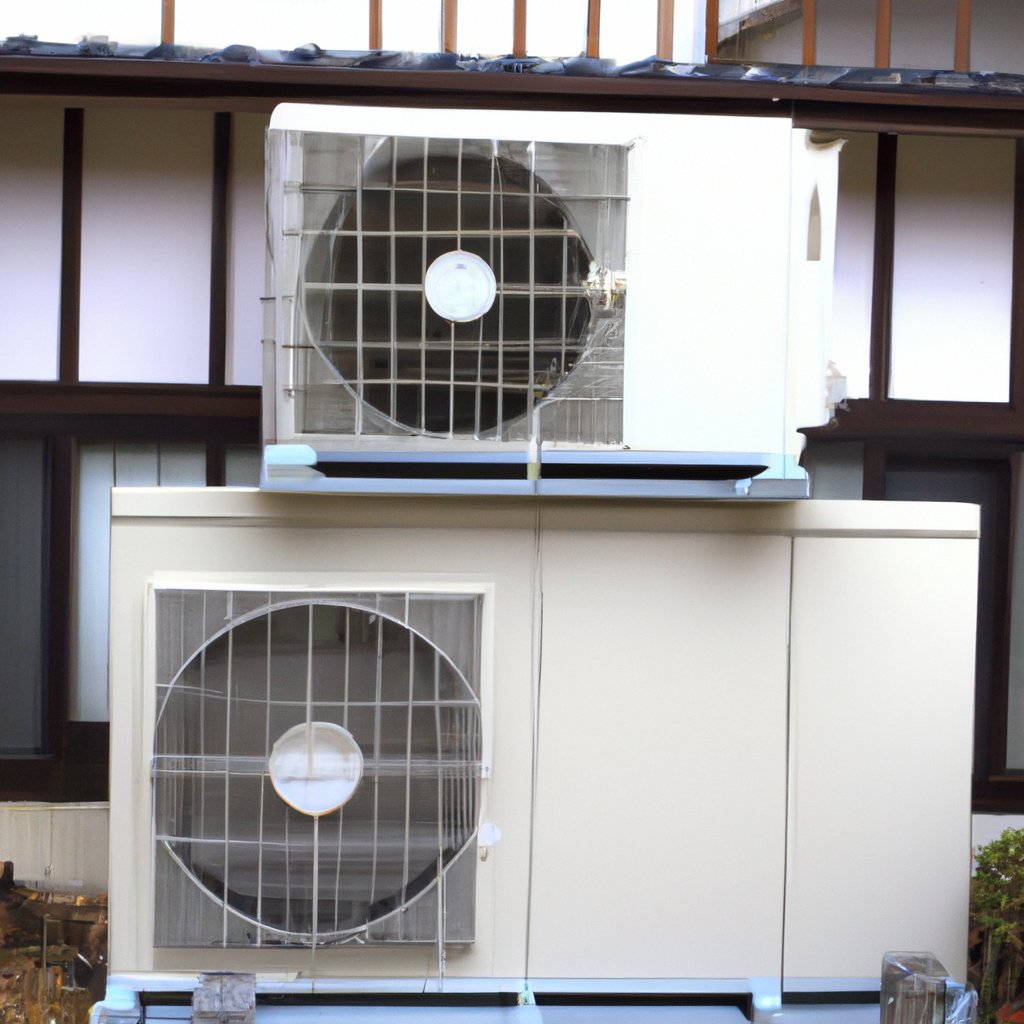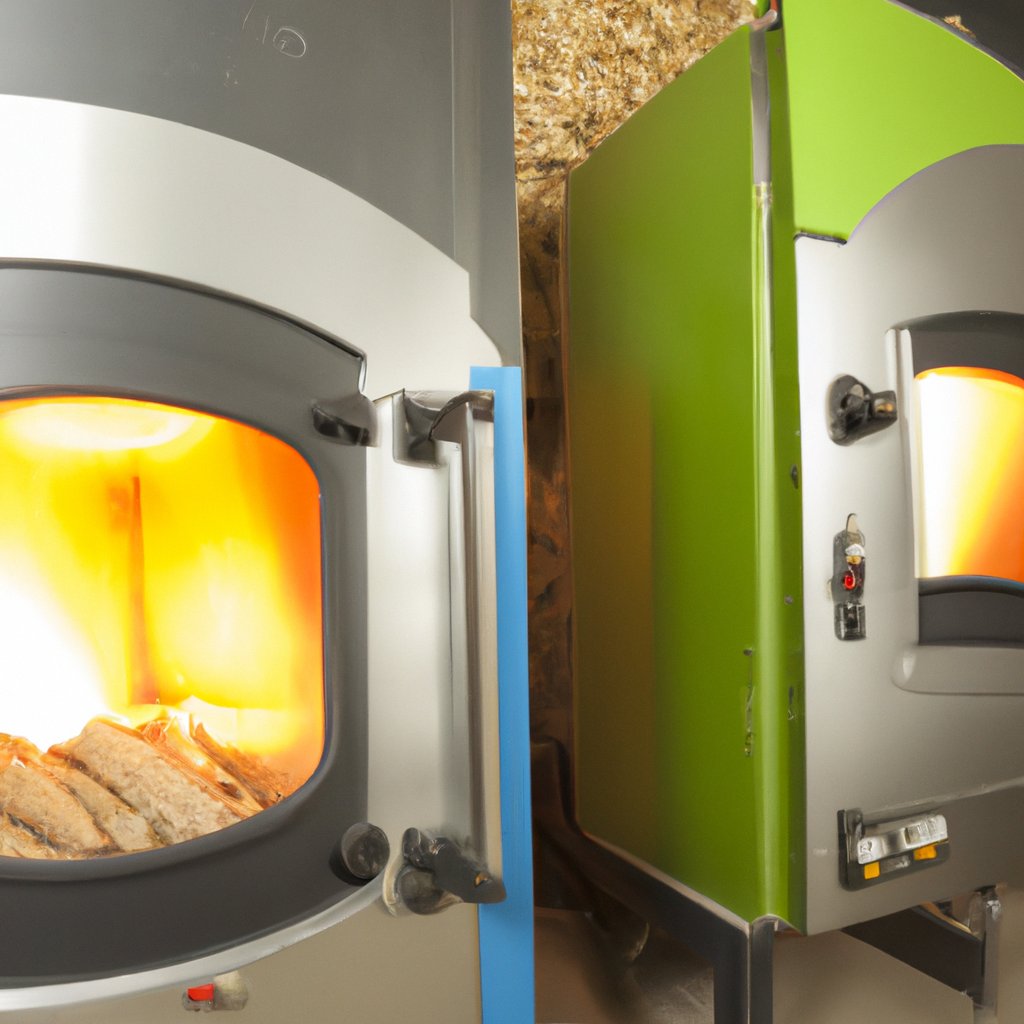- Home
- Energy Efficiency Home
- What Appliances Qualify for Energy Tax Credit
what appliances qualify for energy tax credit? The Guide to Claiming Energy Tax Credits
When it comes to efficient, energy-saving appliances, it can be difficult to know which appliances qualify for the energy tax credit. Energy tax credits are beneficial to homeowners because they reduce the amount of taxes they owe.
This can be a substantial financial benefit, particularly for those who make home energy improvements. Therefore, it is important to understand which appliances qualify for the energy tax credit. This blog post will provide an overview of what appliances qualify for the energy tax credit and how to take advantage of this valuable tax benefit.
By the end of this blog post, you should have a better understanding of the types of appliances that qualify for the energy tax credit and how to claim it on your taxes.
Homeowners who install energy-saving improvements in their homes in 2023 may qualify for an Energy Tax Credit of up to 30% on the cost of materials and installation. Eligible appliances include solar panels, solar water heaters, geothermal heat pumps, small wind turbines, fuel cells, and certain high-efficiency windows, doors, roofing, and insulation.
Qualified homeowners will receive an IRS Form 5695 at tax time for their credit amount. Proper installation is essential for qualifying for these credits; be sure to consult with a qualified professional for guidance.
appliances that qualify for energy tax credit
1. Certain air conditioners
Certain air conditioners are eligible for the energy tax credit when they meet certain efficiency criteria. The criteria for these air conditioners are set by the Department of Energy and include minimum Seasonal Energy Efficiency Ratings (SEERs) and Energy Efficiency Ratings (EERs). The energy tax credit is available for models with a SEER rating of at least 16 and an EER rating of at least 13. This credit can be up to $600 for qualified purchases.
2. Heat pumps tax credit 2023
This tax credit aims to encourage individuals and businesses to invest in energy-efficient products by offering a financial incentive. Specifically, this tax credit is effective for the purchase and installation of eligible Heat Pump Water Heaters (HPWH) that have earned the ENERGY STAR rating between January 1, 2023, and December 31, 2032.
As long as the product meets or exceeds the highest efficiency tier established by the Consortium for Energy Efficiency at the beginning of the calendar year, individuals and businesses can claim up to 30% of the project costs with a maximum of $2000. This serves as an incentive to promote energy efficiency and reduce energy consumption, ultimately leading to cost savings for taxpayers.
3. Furnaces
Under the provisions of the tax credit program, eligible gas furnaces must be ENERGY STAR certified with an AFUE rating greater than 97%. This tax credit is effective for products purchased and installed between January 1, 2023, and December 31, 2032.
For oil furnaces, eligible equipment must also meet ENERGY STAR requirements in addition to utilizing fuels blended with at least a 20% volume of biodiesel, renewable diesel, or second-generation biofuel as rated by the manufacturer.
As per the applicable tax code, these eligible systems must “meet or exceed the highest efficiency tier (not including any advanced tier) established by the Consortium for Energy Efficiency which is in effect as of the beginning of the calendar year.” The eligibility criteria detailed above are compliant with this mandate.
4. Water heaters
Gas storage water heaters are an energy-efficient and cost-effective solution for hot water needs. ENERGY STAR-certified models, with a Uniform Energy Factor (UEF) rating of 0.81 or higher for tanks less than 55 gallons and 0.86 or higher for tanks greater than or equal to 55 gallons, are eligible for rebates and incentives.
Tankless gas water heaters, on the other hand, provide even more efficiency and savings. When purchasing a tankless model, choose one that has an ENERGY STAR certification and a UEF rating of 0.95 or higher to be eligible for rebates and incentives. Investing in an ENERGY STAR-certified gas storage water heater or tankless model will help save money on energy bills while also reducing your environmental impact.
5. Boilers
Hot Water Boilers (Natural Gas, Propane, Oil) Tax Credit provides homeowners with an incentive to purchase and install eligible energy-efficient hot water boilers. These credits are designed to help homeowners save money on their heating bills while also reducing our country’s reliance on foreign oil.
The credits are available for new and existing residential hot water boiler systems. To qualify for the credit, the hot water boiler must be fueled by natural gas, propane, or oil and have an annual fuel utilization efficiency (AFUE) of 90% or greater. The credit is based on the total installed cost of the system including labor costs.
The maximum credit allowed is 30% or a maximum of $600 per system and cannot exceed the taxpayer’s income tax liability. Homeowners should consult with a qualified installer to ensure they maximize their savings through this tax credit.
6. Air source heat pumps

Air source heat pumps are eligible for energy tax credits. These systems use the ambient air temperature to either heat or cool buildings, depending on the season. The energy efficiency of air source heat pumps is measured in terms of Seasonal Energy Efficiency Ratio (SEER) and Heating Seasonal Performance Factor (HSPF).
The higher the SEER and HSPF, the higher the energy efficiency and the eligible tax credit. When shopping for an air source heat pump, make sure to check the SEER and HSPF ratings on the EnergyGuide label of the unit. Consumers should also be aware that the installation of an air source heat pump may require additional work such as the installation of ducts, which may increase the cost of the project.
7. Biomass stoves

Biomass stoves are eligible to apply for the energy tax credit as they qualify as efficient energy-saving appliances. Biomass stoves use wood, corn, pellets, or other biomass fuels to heat up the living space and are becoming increasingly popular due to their low operating costs and environmental benefits.
Not only do biomass stoves help to reduce energy consumption and promote sustainability, but they may also be eligible for additional tax credits and rebates. It is important to note that eligible biomass stoves must be approved by the Environmental Protection Agency (EPA), and must meet the minimum efficiency requirements set by the Department of Energy.
8. Solar energy systems
Solar Energy Systems are eligible for the energy tax credit as long as they meet the requirements. To qualify, the solar energy systems must be installed on or in connection with a taxpayer’s primary or secondary residence in the United States.
The system must be used to generate electricity for the residence and must be certified by the manufacturer. Additionally, the taxpayer must be the owner of the system and it must be placed into service before the end of the tax year for which the credit is being claimed.
The Inflation Reduction Act of 2022 provides good news for those considering solar energy investments in 2023 and beyond. Originally, the tax credit for investments in solar technology was scheduled to decrease to 22% in 2023; with the passage of the act, not only will the credit remain available but it will also increase to 30%, making solar an even more financially attractive option for homeowners.
The new provision is set to last until at least 2032 and could be extended beyond this date should Congress take supporting action. Investing in solar now could lead to long-term savings on energy costs while helping reduce our overall dependence on traditional energy sources.
9. Geothermal heat pumps
Geothermal heat pumps are an energy-efficient solution for heating and cooling a home. They use the natural heat of the earth to warm a home in winter and to cool a home in summer. These systems can reduce energy costs significantly and, in certain circumstances, qualify for an energy tax credit. To be eligible for this credit, the heat pump must be installed in the taxpayer’s primary residence, and it must comply with certain energy-efficiency requirements.
10. Small-scale wind energy systems
Small-scale wind energy systems, such as small wind turbines, qualify for the energy tax credit if they are used to generate electricity for a home or business. To qualify, the system must meet the applicable requirements of the U.S. Department of Energy and be certified by a qualified technician.]
what is the Annual Federal efficiency tax credit limit?
Reduce your energy bills while saving the planet! What could be better? Take advantage of the generous annual limits on Energy Efficient Home Improvement Tax Credits and give your home a much-needed upgrade. This year, you are eligible for up to $3,200 in tax credits with an aggregate limit of $1,200 for windows, doors, skylights, insulation, and electrical upgrades plus furnaces, boilers, and central air conditioners.
Heat pumps, heat pump water systems, and biomass stoves/boilers have an aggregate limit of $2,000. Enjoy the long-term financial and environmental benefits of improving your home's energy efficiency. Give your wallet and the planet a break today - start your project now!
How to apply for an Energy tax credit?
Applying for an energy tax credit is a great way to save money on taxes or upgrade to more energy-efficient systems. As experts in the field, we recommend that consumers first research the available credits and determine which one best meets their needs.
Once you've identified the appropriate credit, you'll need to gather relevant paperwork such as proof of purchase, product specifications, and installation invoices. After compiling these items, you can apply using form 5695 filed with your annual income tax return.
If approved, you may qualify for a portion of the costs applicable to the system you are installing. It's important to note that credits vary by region and are subject to change each year. Additionally, some states or local government agencies may offer additional credits or incentives which should be researched before filing your claim. With careful research and preparation, energy tax credits can help you offset the cost of your energy-efficient upgrades.
How to make the most of your energy tax credit?
Making the most of your energy tax credit can significantly reduce your taxes while helping to sustain a healthy environment. To start, first, determine if you are eligible for the credit. Eligibility requirements vary, so it is important to check with the Internal Revenue Service to find out which ones apply to you.
Once you know that you are eligible for the credit, make sure you understand all submission requirements and deadlines, as any form or application must be completed and submitted on time in order to receive the credit. Additionally, you should track your energy-saving activities throughout the year, such as purchasing energy-efficient appliances or new insulation, to maximize your credit amount.
You should make sure that the investment meets the eligibility criteria of the credit, which includes requirements on energy efficiency. Additionally, there are other factors to consider such as the amount of energy saved, whether the installation was done by a professional contractor and any applicable expiration dates. By taking advantage of energy-saving opportunities and properly preparing for the tax season, you can make the most of your energy tax credit and save on taxes.
what appliances qualify for energy tax credit? summary
Energy efficiency tax credits can help you save money when you replace older, less efficient home appliances with more energy-efficient models. While the exact amount of credit varies by appliance, it's important to note that appliances must meet certain energy standards to qualify for the tax credit. Additionally, the tax credit is only available for a limited time, so make sure to check the current requirements when shopping for energy-efficient appliances.